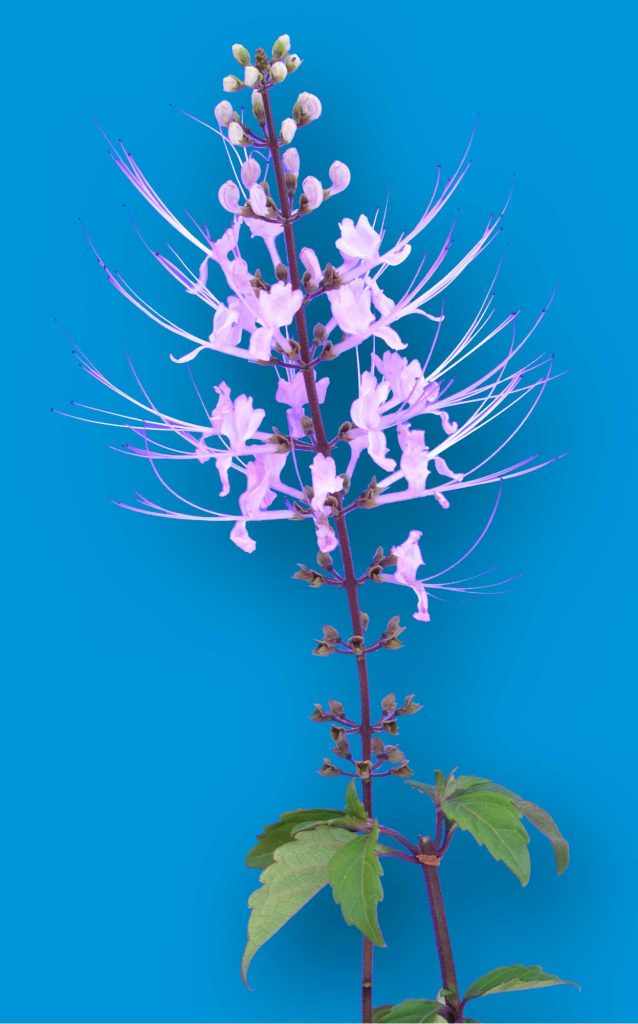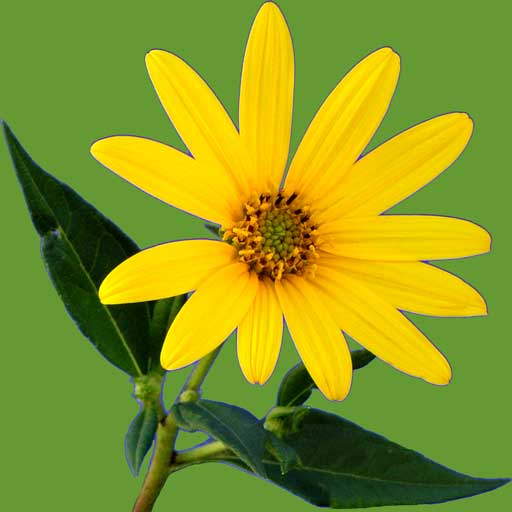Java Tea, Kumis Kutjing
Orthosiphon aristatus F. Lamiaceae
Description
Fast growing, perennial bush, 1-2 metres tall, indigenous to south east Asia and Australia’s tropical North Queensland. Multi-branched stems have opposite, ovate leaves to 5cm with fine toothed margins. Terminal flower stems carry whorls of white, two-lipped flowers and protruding purple stamens, which give the flower its characteristic cat’s whiskers appearance. It is a favourite flower of my daughter, Angela. There is a variety with lavender flowers, that also makes an eye-catching display in the garden.
… … omitted text, please see How can I use HERBS in my daily life? for full text.

Medicinal Uses
With a tradition of use in Thailand, Malaysia and Indonesia for several centuries, we can learn how to use one of our beautiful native plants. Cat’s Whiskers is an esteemed tea for kidney diseases, disorders causing wasting disease, dysuria, and for the treatment of kidney and urinary stones or discharge. Recent research in south east Asia with trials over 1-6 months, showed that patients taking it as a tea made with 4g dried leaf to 750 ml of boiling water, released urinary stones 0.5cm in size for 40% of the patients, and another 20% of the patients found that all pain was gone after the treatment.
Leaves can be used fresh, or dried as an infusion or decoction. The crushed, dried leaves may be encapsulated; the active ingredient retaining its properties for several years when stored in cool, dry conditions. The herb is also used for gallstones. Use 15-20 fresh leaves, a ‘finger knob’ of fresh turmeric, 7 cloves of garlic, and 1 litre of water, simmer 10- 15 minutes, strain. Half the decoction is drunk in the morning and half in the afternoon.
For rheumatic pains and coughs, a cup of tea is made with 15-20 leaves, drinking 1-2 cups a day.
I have had several people share with me how cat’s whiskers has brought fast relief from pain caused by kidney stones. A friend Cheryl, told me of the case of a man with kidney stones, who took 2 cups of cat’s whiskers tea and passed the stones.
A business executive in Sydney asked his secretary to ring and order cat’s whiskers plants. He had just returned from a trip to Indonesia, and whilst there was bothered by severe pain caused by kidney stones. He was given cat’s whiskers which gave quick relief. His desire now was to have the plant growing in his garden, so that he would have it on hand if ever needed again.
… … omitted text, please see How can I use HERBS in my daily life? for full text.




